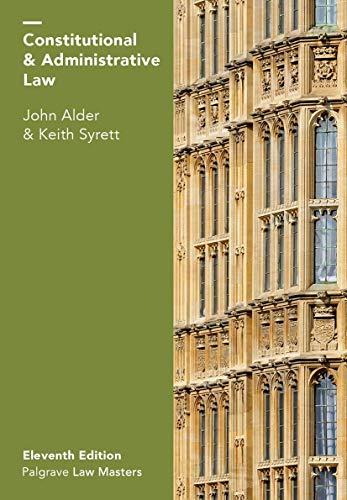Question
Section 75 of the Consumer Credit Act 1974: Section 75 of the Consumer Credit Act 1974 (CCA) is a crucial provision that has provided significant
Section 75 of the Consumer Credit Act 1974:
Section 75 of the Consumer Credit Act 1974 (CCA) is a crucial provision that has provided significant protection to consumers in credit card transactions. It holds credit card companies jointly liable with retailers for breaches of contract or misrepresentations[1]. While this provision has been lauded for its consumer protection benefits, it has also been a subject of criticism from the credit industry. This post will critically assess the application of Section 75, including relevant case law and sections of the CCA.[2]
Section 75(1) of the CCA states that "If the debtor under a debtor-creditor-supplier agreement falling within section 12(b) or (c) has[3], in relation to a transaction financed by the agreement, any claim against the creditor or supplier in respect of a misrepresentation or breach of contract, he shall have a like claim against the creditor, who, with the supplier, shall accordingly be jointly and severally liable to the debtor."[4]
One of the landmark cases that have influenced the interpretation of Section 75 is Wilson v First County Trust Ltd (No 2) [2003] UKHL 40. In this case, the House of Lords clarified that for Section 75 to apply, the creditor must be "the supplier of the goods or services" to the debtor. This decision has had significant implications for the scope of Section 75 and has been cited in numerous subsequent cases.[5]
While Section 75 provides important protection for consumers, it has also faced criticism from the credit industry. One of the main criticisms is that it places undue burdens on credit providers, especially in cases where the retailer is no longer in business. Creditors argue that they should not be held liable for breaches of contract or misrepresentations made by retailers over which they have no control.[6]
The application of Section 75 raises important questions about the balance between consumer protection and creditor's interests. While consumers benefit from the additional protection provided by Section 75, creditors argue that it may discourage them from offering credit, especially for high-risk transactions.[7]
ultimately, Section 75 of the Consumer Credit Act 1974 has been a key provision in providing protection to consumers in credit card transactions. However, its application has also raised challenges and criticisms from the credit industry. The balance between consumer protection and creditor's interests remains a complex issue, and further discussion and review of Section 75 may be necessary to address these concerns.
[1] '9. Purpose Of Consumer Credit Act 1974. | Consumer Credit | LexisNexis' (LexisNexis | Legal and Professional Solutions and Products, 7 February 2023)
[2] Consumer Credit Act 1974
[3] 'Consumer Credit Act 1974' (Legislation.gov.uk)
[4] Consumer Credit Act 1974, Section 75(1)
[5] Wilson v First County Trust Ltd (No 2) [2003] UKHL 40
[6] Office of Fair Trading v Abbey National plc and Others [2009] UKSC 6
[7] McWilliam and Others v Norton Finance (UK) Ltd [2009] EWCA Civ 29
Respond to the above using OSCOLA references.
You may address aspects which include the following:
Consider the application of section 75. Consider the position prior to the establishment of the Act. Consider the reason for establishing the CCA and aspects relating to creditor's liability which have proved difficult to interpret. Assess the different cases on creditor's liability and how they have influenced the development of the statute. Consider whether the law offers protection for debtors and how the law balances the interest of creditors.
Step by Step Solution
There are 3 Steps involved in it
Step: 1

Get Instant Access to Expert-Tailored Solutions
See step-by-step solutions with expert insights and AI powered tools for academic success
Step: 2

Step: 3

Ace Your Homework with AI
Get the answers you need in no time with our AI-driven, step-by-step assistance
Get Started


